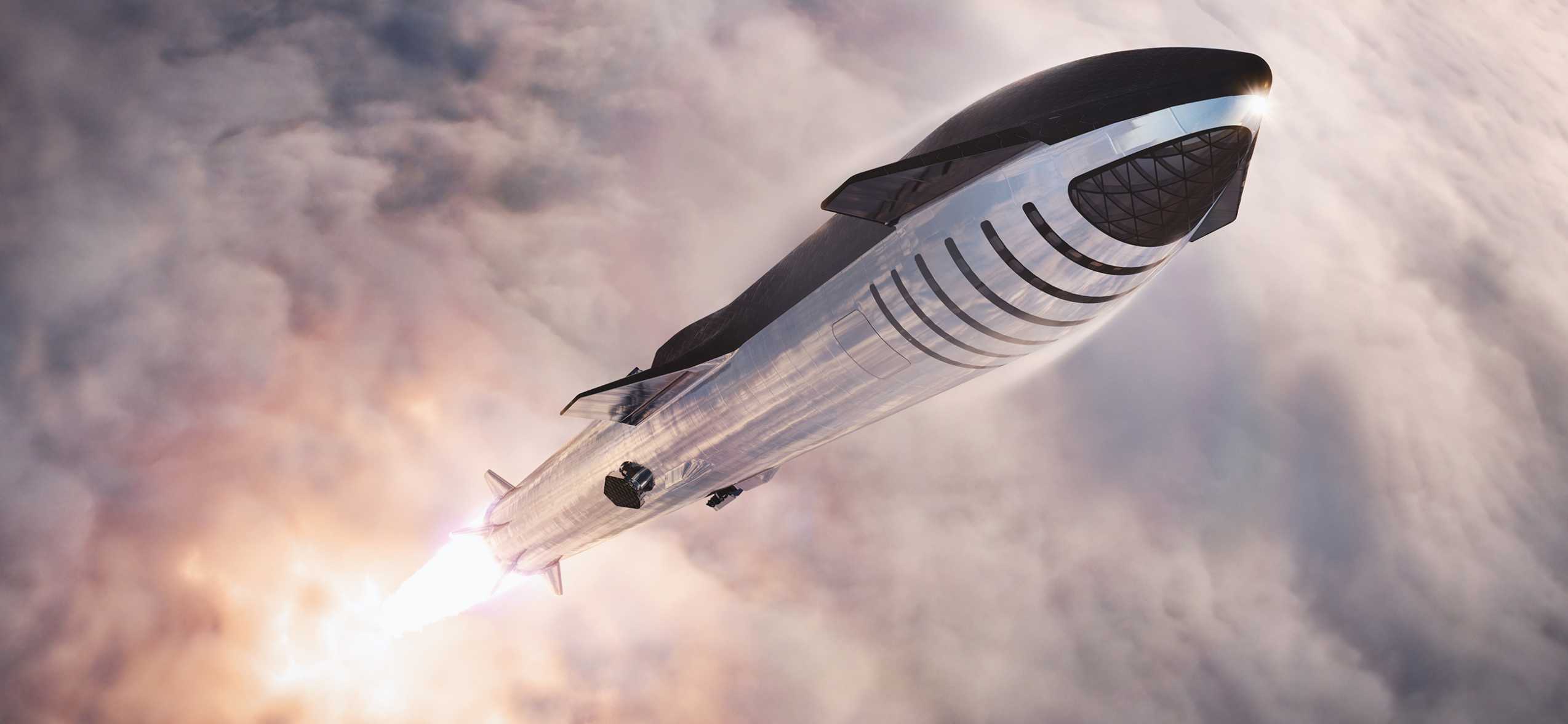
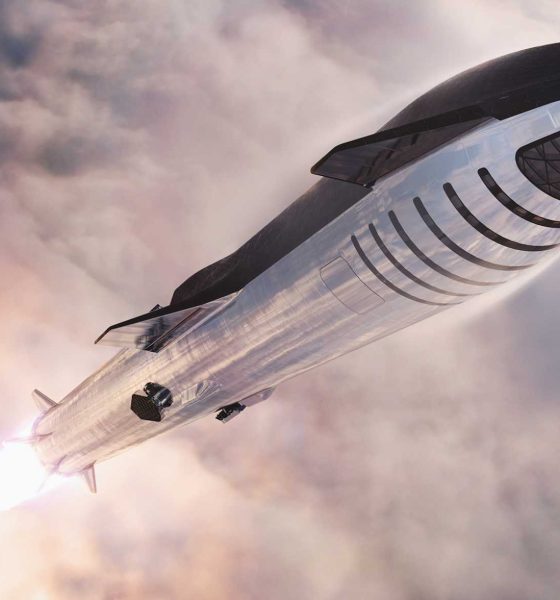
News
SpaceX’s orbital Starship launch debut could still happen this year
Despite the spectacular demise of a full-scale prototype just days ago, a senior SpaceX engineer and executive believes that Starship could still be ready for its first orbital launch attempt before the end of the year.
Even if the first launch attempt fails, that milestone – if realized – would be one of the single biggest upsets in the history of spaceflight, proving that Saturn V-scale orbital-class rockets can likely be built in spartan facilities with common materials for pennies on the dollar. Much like Falcon 1 suffered three launch failures before successfully reaching orbit, there’s a strong chance that Starship’s first shot at orbit will fall short, although each full-up launch failure would likely cost substantially more than the current prototypes being routinely tested to destruction in South Texas.
Most recently, what CEO Elon Musk later described as a “a minor test of a quick disconnect” went wrong in a spectacular fashion, causing a major liquid methane leak that subsequently ignited and created a massive explosion. Although Starship SN4 did technically complete its fifth Raptor engine static fire test just a minute or so prior, the ship and its immediate surroundings were obliterated by the violent explosion, leaving little more than steel shrapnel and the broken husk of a launch mount behind. It’s in this context that one of SpaceX’s most levelheaded, expert executives believes that an orbital launch could still happen this year.
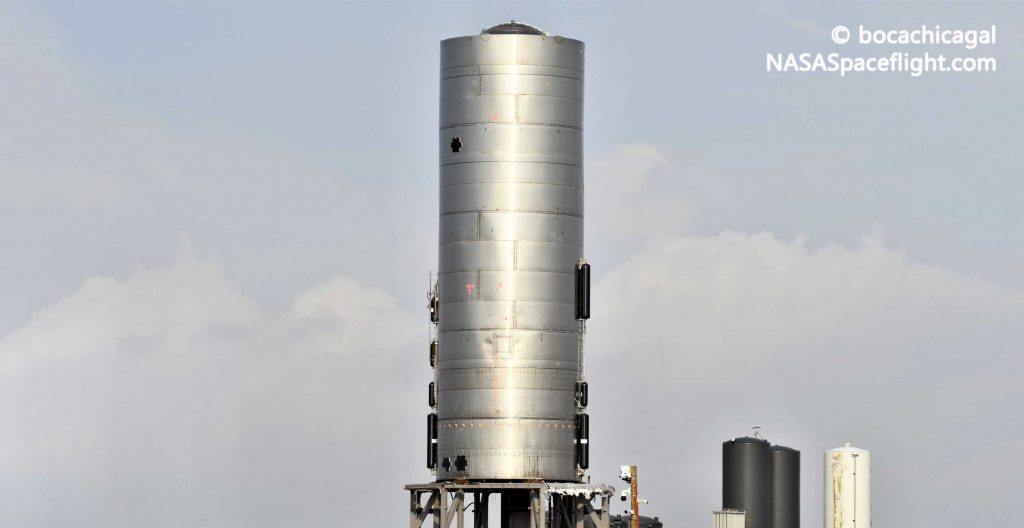
While Starship SN4’s demise and the continued possibility of the ship’s orbital launch debut occurring less than seven months from now may seem at odds with each other, that’s actually just a side effect of the approach SpaceX has always taken when developing brand new rockets and spacecraft. Following the lead of the scrappy teams that used the exact same methods to design, test, and fly the massive Saturn rockets that took humans to the Moon, SpaceX has always preferred to learn by doing.
Inevitably, testing minimum viable products to their limits will lead to failures, but those failures are actually extremely valuable so long as they are extensively analyzed and learned from. That’s exactly what SpaceX has been doing for the last six or so months with full-scale Starship prototypes: building, testing, failing, and improving in an unending cycle. Built slowly with inferior methods, Starship Mk1 almost immediately during its first pressure test in November 2019. SpaceX took that failure, extracted all the insight it could, and dramatically improved its production methods before completing Starship SN1 barely three months later.
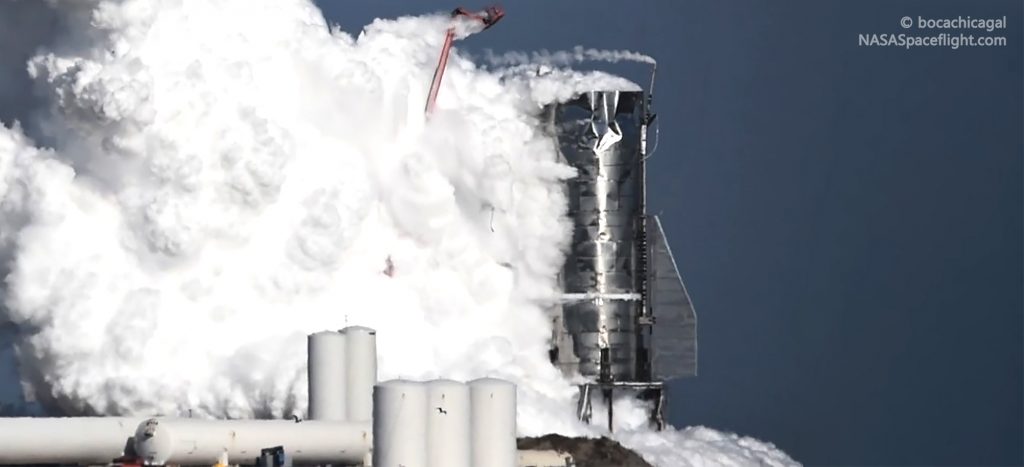
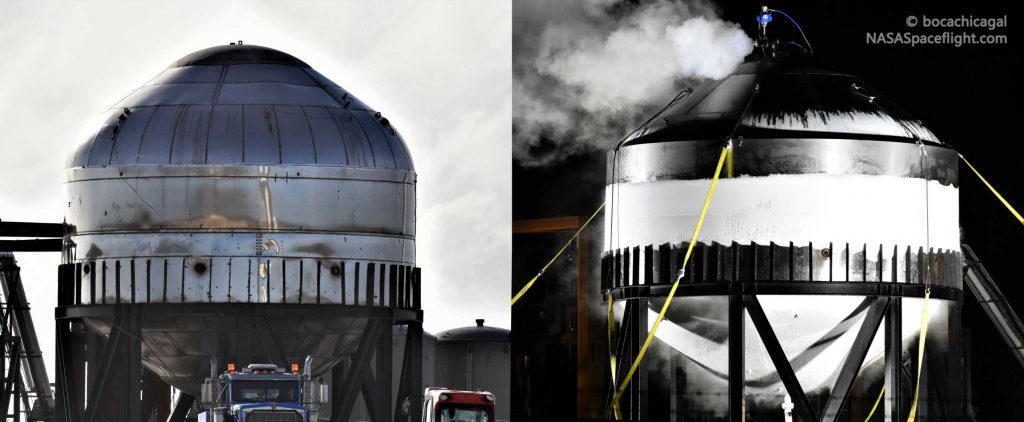
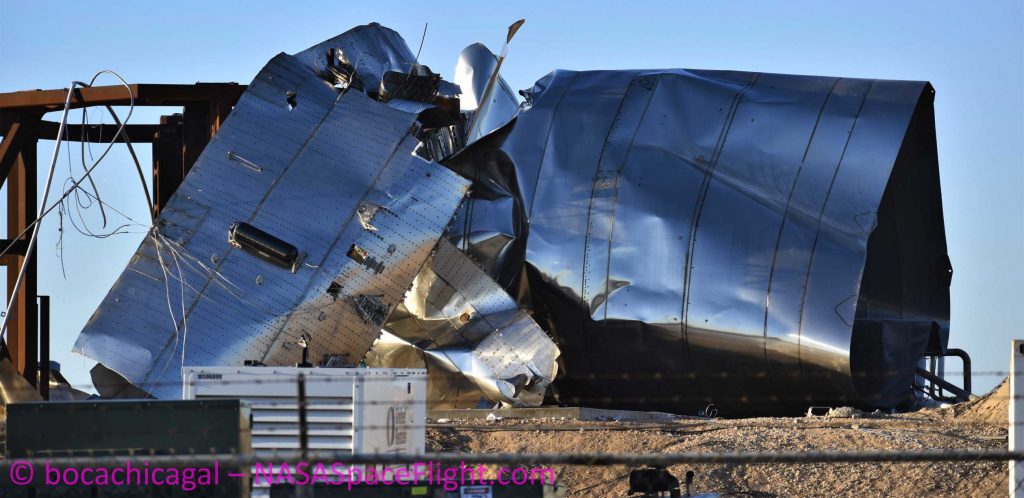

Prior to SN1, SpaceX built and tested two stout test tanks to failure, ultimately achieving pressures of ~8.5 bar – sufficient for reliable human spaceflight – with the second tank on January 30th, 2020. On February 28th, Starship SN1 was unfortunately destroyed by a faulty ‘thrust puck’ (Raptor engine mount). Just 10 days later, SpaceX successfully tested a third ad-hoc test tank, proving that it had already rectified the engine section design flaw. Hardware isn’t always the only problem, however, and Starship SN3 was destroyed by human operator error during a cryogenic proof test on April 3rd.
Starship SN4 was completed and moved to the launch pad less than a month later and began testing just a few days after that, quickly racking up milestones as it became the first full-scale prototype to pass cryogenic proof testing, perform a wet dress rehearsal (WDR) with real propellant, fire up a Raptor engine, and complete a more ambitious cryogenic pressure test. Prior to the ground systems fuel leak that killed it, SN4 was possibly just days away from attempting the inaugural flight of a full-scale Starship prototype.
With Starship SN4 now steel confetti, Starship SN5 – effectively complete – will likely take over where its predecessor left off, heading to the launch pad within the next week or so before attempting a cryogenic pressure test and Raptor static fire to clear it for flight. Per Koenigsmann, that flight debut could come just a few weeks from now – likely before the end of June if replacement ground equipment can be quickly completed. If Starship SN5 survives that hop debut, it may ultimately be upgraded with a nosecone, flaps, and two additional Raptor engines to perform a dramatic 20 km (~12 mi) flight, capped with a supersonic skydiver-style reentry and landing test.
Once that capability has been successfully demonstrated, Super Heavy development and orbital Starship operation and reentry are the next critical hurdles. If Koenigsmann is correct, it’s safe to say that the first fully heat-shielded Starships and the beginnings of the first one or several Super Heavy booster prototypes will begin to appear in South Texas within the next few months.
Check out Teslarati’s Marketplace! We offer Tesla accessories, including for the Tesla Cybertruck and Tesla Model 3.

News
Tesla is not sparing any expense in ensuring the Cybercab is safe
Images shared by the longtime watcher showed 16 Cybercab prototypes parked near Giga Texas’ dedicated crash test facility.

The Tesla Cybercab could very well be the safest taxi on the road when it is released and deployed for public use. This was, at least, hinted at by the intensive safety tests that Tesla seems to be putting the autonomous two-seater through at its Giga Texas crash test facility.
Intensive crash tests
As per recent images from longtime Giga Texas watcher and drone operator Joe Tegtmeyer, Tesla seems to be very busy crash testing Cybercab units. Images shared by the longtime watcher showed 16 Cybercab prototypes parked near Giga Texas’ dedicated crash test facility just before the holidays.
Tegtmeyer’s aerial photos showed the prototypes clustered outside the factory’s testing building. Some uncovered Cybercabs showed notable damage and one even had its airbags engaged. With Cybercab production expected to start in about 130 days, it appears that Tesla is very busy ensuring that its autonomous two-seater ends up becoming the safest taxi on public roads.
Prioritizing safety
With no human driver controls, the Cybercab demands exceptional active and passive safety systems to protect occupants in any scenario. Considering Tesla’s reputation, it is then understandable that the company seems to be sparing no expense in ensuring that the Cybercab is as safe as possible.
Tesla’s focus on safety was recently highlighted when the Cybertruck achieved a Top Safety Pick+ rating from the Insurance Institute for Highway Safety (IIHS). This was a notable victory for the Cybertruck as critics have long claimed that the vehicle will be one of, if not the, most unsafe truck on the road due to its appearance. The vehicle’s Top Safety Pick+ rating, if any, simply proved that Tesla never neglects to make its cars as safe as possible, and that definitely includes the Cybercab.
Elon Musk
Tesla’s Elon Musk gives timeframe for FSD’s release in UAE
Provided that Musk’s timeframe proves accurate, FSD would be able to start saturating the Middle East, starting with the UAE, next year.

Tesla CEO Elon Musk stated on Monday that Full Self-Driving (Supervised) could launch in the United Arab Emirates (UAE) as soon as January 2026.
Provided that Musk’s timeframe proves accurate, FSD would be able to start saturating the Middle East, starting with the UAE, next year.
Musk’s estimate
In a post on X, UAE-based political analyst Ahmed Sharif Al Amiri asked Musk when FSD would arrive in the country, quoting an earlier post where the CEO encouraged users to try out FSD for themselves. Musk responded directly to the analyst’s inquiry.
“Hopefully, next month,” Musk wrote. The exchange attracted a lot of attention, with numerous X users sharing their excitement at the idea of FSD being brought to a new country. FSD (Supervised), after all, would likely allow hands-off highway driving, urban navigation, and parking under driver oversight in traffic-heavy cities such as Dubai and Abu Dhabi.
Musk’s comments about FSD’s arrival in the UAE were posted following his visit to the Middle Eastern country. Over the weekend, images were shared online of Musk meeting with UAE Defense Minister, Deputy Prime Minister, and Dubai Crown Prince HH Sheikh Hamdan bin Mohammed. Musk also posted a supportive message about the country, posting “UAE rocks!” on X.
FSD recognition
FSD has been getting quite a lot of support from foreign media outlets. FSD (Supervised) earned high marks from Germany’s largest car magazine, Auto Bild, during a test in Berlin’s challenging urban environment. The demonstration highlighted the system’s ability to handle dense traffic, construction sites, pedestrian crossings, and narrow streets with smooth, confident decision-making.
Journalist Robin Hornig was particularly struck by FSD’s superior perception and tireless attention, stating: “Tesla FSD Supervised sees more than I do. It doesn’t get distracted and never gets tired. I like to think I’m a good driver, but I can’t match this system’s all-around vision. It’s at its best when both work together: my experience and the Tesla’s constant attention.” Only one intervention was needed when the system misread a route, showcasing its maturity while relying on vision-only sensors and over-the-air learning.
News
Tesla quietly flexes FSD’s reliability amid Waymo blackout in San Francisco
“Tesla Robotaxis were unaffected by the SF power outage,” Musk wrote in his post.

Tesla highlighted its Full Self-Driving (Supervised) system’s robustness this week by sharing dashcam footage of a vehicle in FSD navigating pitch-black San Francisco streets during the city’s widespread power outage.
While Waymo’s robotaxis stalled and caused traffic jams, Tesla’s vision-only approach kept operating seamlessly without remote intervention. Elon Musk amplified the clip, highlighting the contrast between the two systems.
Tesla FSD handles total darkness
The @Tesla_AI account posted a video from a Model Y operating on FSD during San Francisco’s blackout. As could be seen in the video, streetlights, traffic signals, and surrounding illumination were completely out, but the vehicle drove confidently and cautiously, just like a proficient human driver.
Musk reposted the clip, adding context to reports of Waymo vehicles struggling in the same conditions. “Tesla Robotaxis were unaffected by the SF power outage,” Musk wrote in his post.
Musk and the Tesla AI team’s posts highlight the idea that FSD operates a lot like any experienced human driver. Since the system does not rely on a variety of sensors and a complicated symphony of factors, vehicles could technically navigate challenging circumstances as they emerge. This definitely seemed to be the case in San Francisco.
Waymo’s blackout struggles
Waymo faced scrutiny after multiple self-driving Jaguar I-PACE taxis stopped functioning during the blackout, blocking lanes, causing traffic jams, and requiring manual retrieval. Videos shared during the power outage showed fleets of Waymo vehicles just stopping in the middle of the road, seemingly confused about what to do when the lights go out.
In a comment, Waymo stated that its vehicles treat nonfunctional signals as four-way stops, but “the sheer scale of the outage led to instances where vehicles remained stationary longer than usual to confirm the state of the affected intersections. This contributed to traffic friction during the height of the congestion.”
A company spokesperson also shared some thoughts about the incidents. “Yesterday’s power outage was a widespread event that caused gridlock across San Francisco, with non-functioning traffic signals and transit disruptions. While the failure of the utility infrastructure was significant, we are committed to ensuring our technology adjusts to traffic flow during such events,” the Waymo spokesperson stated, adding that it is “focused on rapidly integrating the lessons learned from this event, and are committed to earning and maintaining the trust of the communities we serve every day.”








